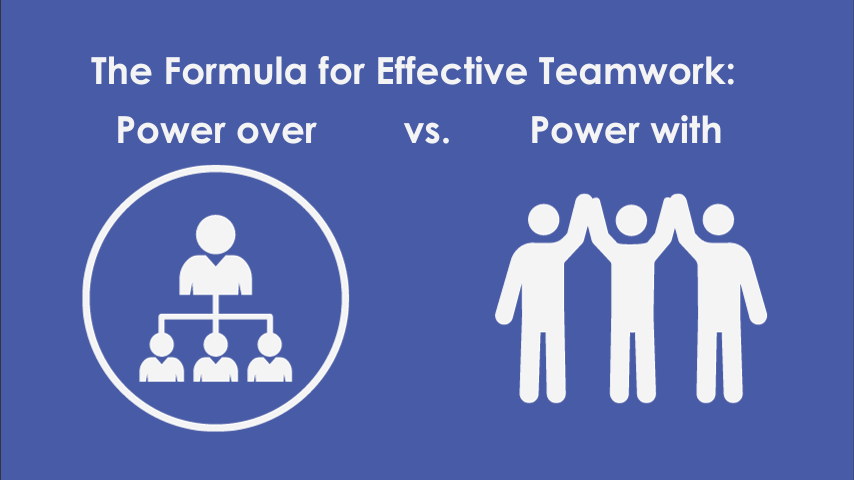Dane sat down with Dr. Dale Marsden to discuss what makes for a great team and high-level teamwork. In their discussion, Dale revealed a simple formula for a high-functioning team: (1) Effective leaders utilize power with rather than power over, and (2) team members need to be humble, hungry, and smart.
In this article, I’ll focus on part one of the formula: influential leaders utilize power with rather than power over to empower their team to achieve exceptional results.
Dr. Marsden served as superintendent of the San Bernardino City Unified School District (SBCUSD) for over eight years. During Dr. Marsden’s tenure, the SBCUSD team experienced a historic increase in graduation rates from 67% to 94%, doubled the number of students eligible to attend 4-year universities, and increased from 5 to 53 high-growth, high-demand pathway experiences, ensuring equity and access for all students to high-wage careers in local and world industries.
Given his and the district’s successes, this makes Dr. Marsden an excellent resource on how to use teams to get results.
Dr. Marsden said, “Over time, we built a high trust, engagement culture and empowerment culture. We actually took a survey when I first arrived, called Power Over versus Power With. It was fun. Every 18 months we did the survey again. The dial moved from a Power Over organization to a Power With organization, because we were powering leaders.”*
“Power over” refers to the traditionally negative definition we conjure in our minds when we hear the word power. Power over treats power as a finite resource. Leaders who utilize this type of power tend to rule through fear, coercion, and domination. They’re the boss nobody wants – think Scrooge, Miranda Priestly, and Darth Vader, to name a few.
“Power with,” on the other hand, is an alternative type of power. “Power with” attempts to understand power as “positive ways of expressing power that create the possibility of forming more equitable relationships and structures and transforming power over (Just Associates 2006).”
Power with refers to the power that results from collaboration within a team. Leaders who power with their teams don’t need to hoard power. Instead, by empowering their teams, the power of the group becomes unlimited. Leaders who utilize this type of power encourage their teams to collaborate, respect, and trust one another to accomplish their goals. They’re the boss everybody wants – think Leslie Knope or Captain Jean-Luc Picard.
To explain how he utilized power with, Dr. Marsden shared the following story. “One time, I had our safety officer give me a call. He needed the superintendent’s advice on a technical safety issue, which I have no training or knowledge for. And I said, ‘This will be the last time you call me. Don’t call me anymore. I trust your judgment. You can let me know what you’re doing, keep me informed. But I trust your judgment.’ That’s the role of leadership. Empower them. Help them to have the skills necessary to do the work in the right way. If you don’t feel they do, then teach them those skills, and have adequate knowledge transfer so you can have a gradual release of responsibility. Let them take that on.”
It was refreshing to hear Dr. Marsden acknowledge that part of leadership is thinking about your relationship to power. According to Brene Brown (2020), “We have a strange relationship with the word, ‘power.’ We often think of it as a negative, strong-arm experience yet – at the exact same time – one of the single worst human experiences is powerlessness. No one wants to feel powerlessness.” Consequently, we often think of power as being fraught with negativity. Instead, it may be more helpful to consider that (1) we all want access to power, (2) leadership inherently involves wielding power in some form, and (3) we seek leadership who wields power in a selfless, human-centered, and team-oriented manner.
In acknowledging his position of power as superintendent, Dr. Marsden was also able to consider how he wanted to utilize his power and made the practical decision to use power with rather than power over. It seems that the results speak for themselves.
*Quotes have been edited for clarity.
References:
- Brown, Brenee. 2020. “on Power and Leadership.” https://hr.umich.edu/sites/default/files/brene-brown-on-power-and-leadership-10-21-20.pdf
- Just Associates. 2006. “Making Change Happen: POWER.” https://justassociates.org/wp-content/uploads/2020/08/mch3_2011_final_0.pdf


